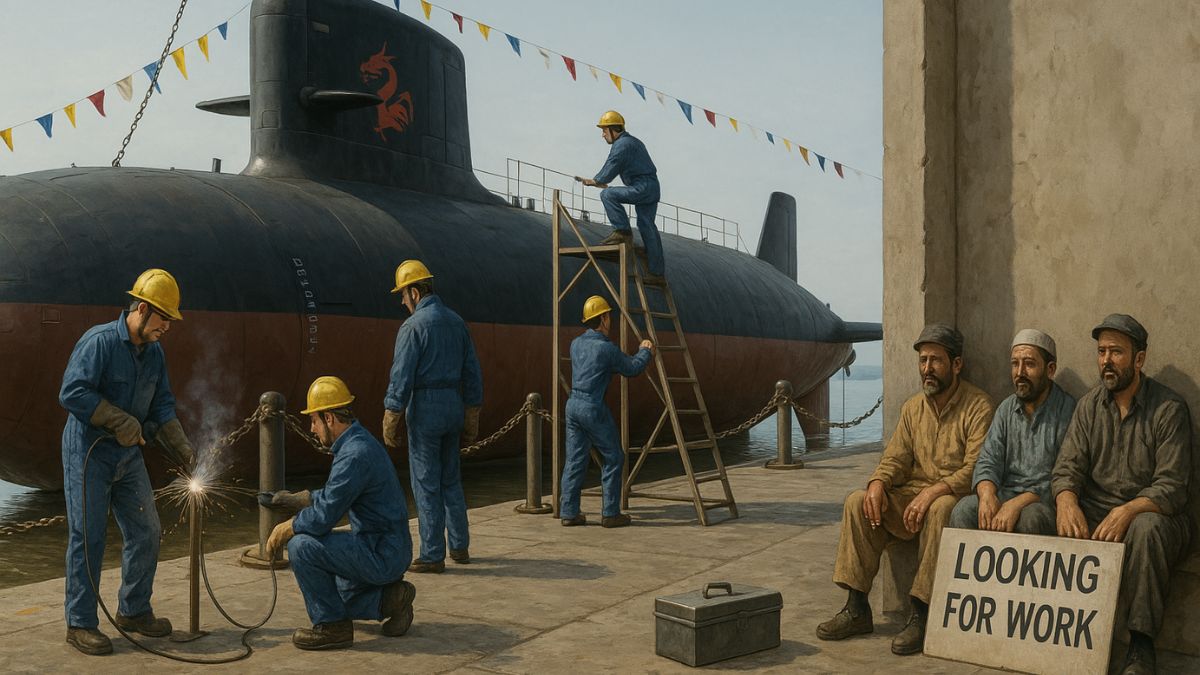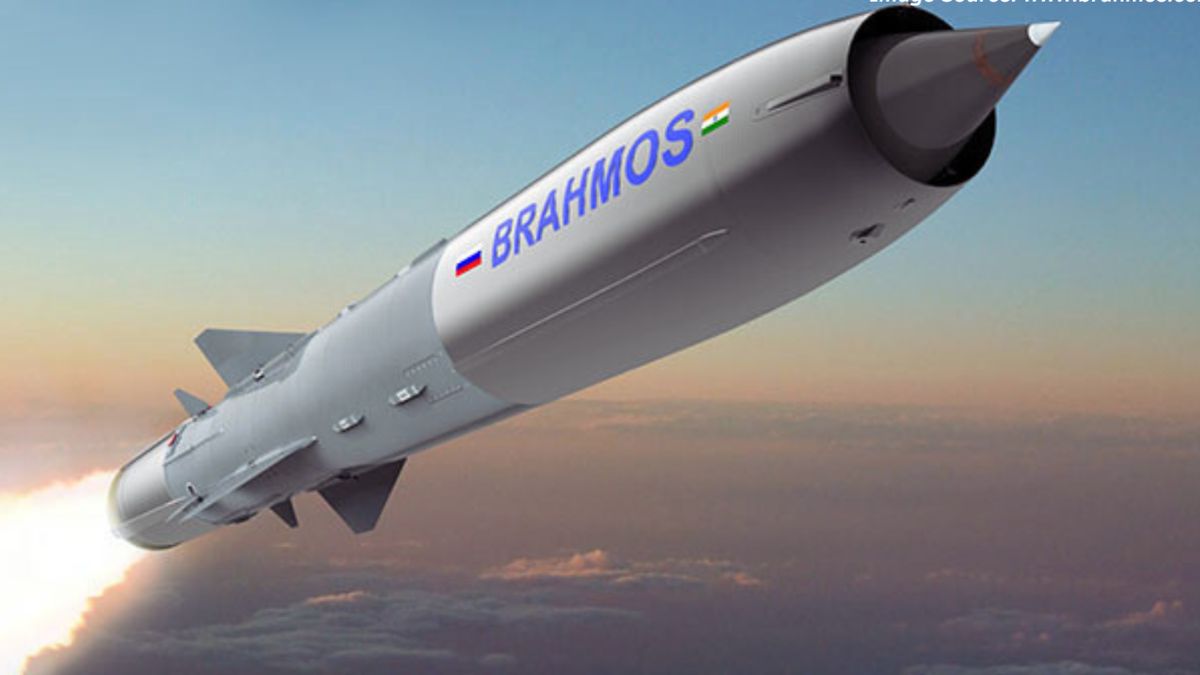Jobs For Wuhan, Not Karachi: The Employment Mirage Of Pakistan’s Hangor Project

In Pakistan, where unemployment and economic stress is high, the Hangor project was supposed to benefit Pakistani workers and engineers. Instead, China will keep those gains. Image courtesy: AI-generated image via DALL-E
When Pakistan signed its deal with China in 2015 for eight new submarines, the agreement promised not only a boost to the fleet but also a promise of jobs and industrial growth at home. Four of the submarines were to be built in China at Wuhan’s Wuchang Shipyard, while the other four were slated for assembly at Karachi Shipyard and Engineering Works (KS&EW) under a transfer-of-technology agreement.
For a country struggling with high unemployment and economic stress, the Hangor project was billed as a symbol of modernisation that would benefit Pakistani workers and engineers. But as the third submarine slid into the water at Wuhan on August 15, 2025, it became clear that the biggest gains from the contract are flowing abroad. Most of the high-end work remains in Chinese hands, and the promise of lasting skills and jobs for Pakistanis looks more like a mirage than a reality.
How much of the work really happens in Pakistan?
Officially, four submarines are to be assembled at KS&EW. In practice, however, the split-build arrangement has left Pakistan dependent on Chinese engineers and technicians. For the first hulls built in China, all design integration, testing, and propulsion work is done at Wuchang. Even in Karachi, embedded Chinese personnel oversee key phases of assembly, trials, and quality assurance.
This is not unusual in defence projects where sensitive technology is involved. But it also means that while Pakistan is paying billions, most of the high-value jobs and expertise are located in Wuhan, not Karachi. The transfer-of-technology package emphasises assembly rather than design or deep engineering, leaving Pakistani workers with limited exposure to critical know-how.
Has Pakistan gained new technical skills?
The record so far is mixed at best. Pakistani engineers at KS&EW have been trained in assembly and limited integration tasks, but the core intellectual property—including combat management software, propulsion diagnostics, and sonar system design—remains firmly with Chinese state-owned companies.
Bangladesh’s experience provides a cautionary parallel. After buying two older Ming-class submarines from China, Dhaka had to inaugurate the US$1.21 billion BNS Sheikh Hasina submarine base in 2023, with heavy Chinese involvement in construction and technical support. Years after commissioning, Bangladesh still depends on Chinese personnel for maintenance and spares. Pakistan risks following the same path: operating submarines nominally under its own flag but reliant on foreign teams for long-term sustainment.
What about employment and industrial benefits?
On paper, the Hangor programme was meant to provide jobs and industrial benefits in Karachi. In reality, high-end roles have been captured by Chinese workers brought in to ensure deadlines and quality standards. Pakistani technicians are employed mainly in assembly, welding, and logistical tasks.
For the broader economy, the project has not created the multiplier effect seen when technology is genuinely indigenised. Unlike India’s push for self-reliance in its anti-submarine warfare platforms, Pakistan’s deal with China has so far produced dependence rather than independence. The most lucrative contracts—for engines, sensors, spares, and combat systems—remain locked to Chinese suppliers.
What is the long-term consequence?
Even after induction, the reliance on Chinese personnel will persist. Modern submarines require software keys, diagnostic tools, and complex spares pipelines that tie navies to their original manufacturers for decades. For Pakistan, this means that every major upgrade, every spare part, and even routine depot-level maintenance will flow through Beijing’s calendar.
In short, the Hangor programme does not mark an industrial leap for Pakistan. Instead, it deepens the Navy’s dependence on Chinese technicians, leaving local workers with limited opportunities and little mastery over the systems they are meant to operate.







